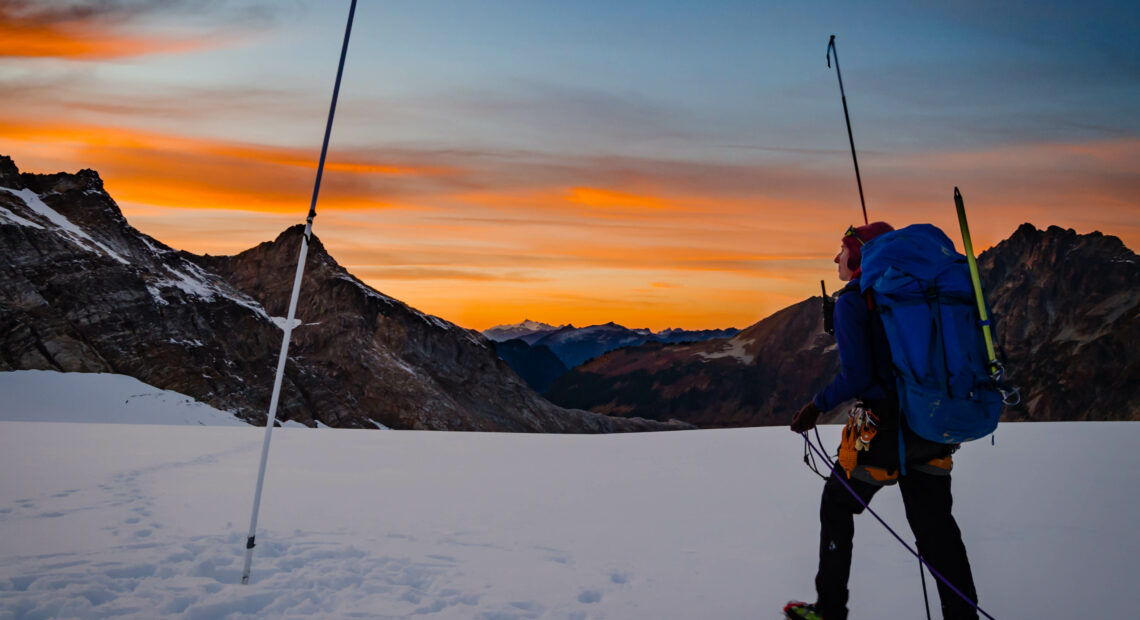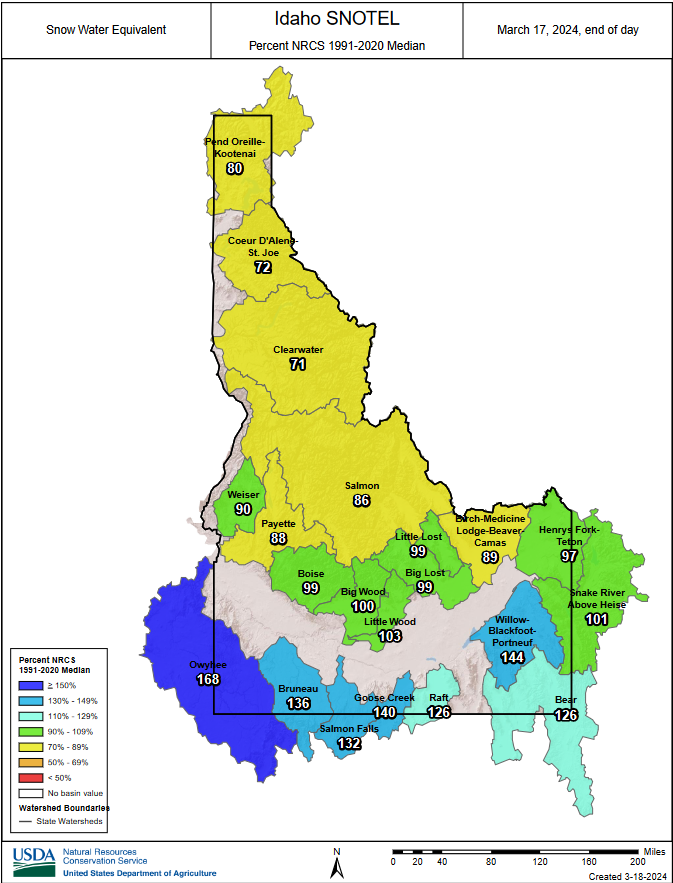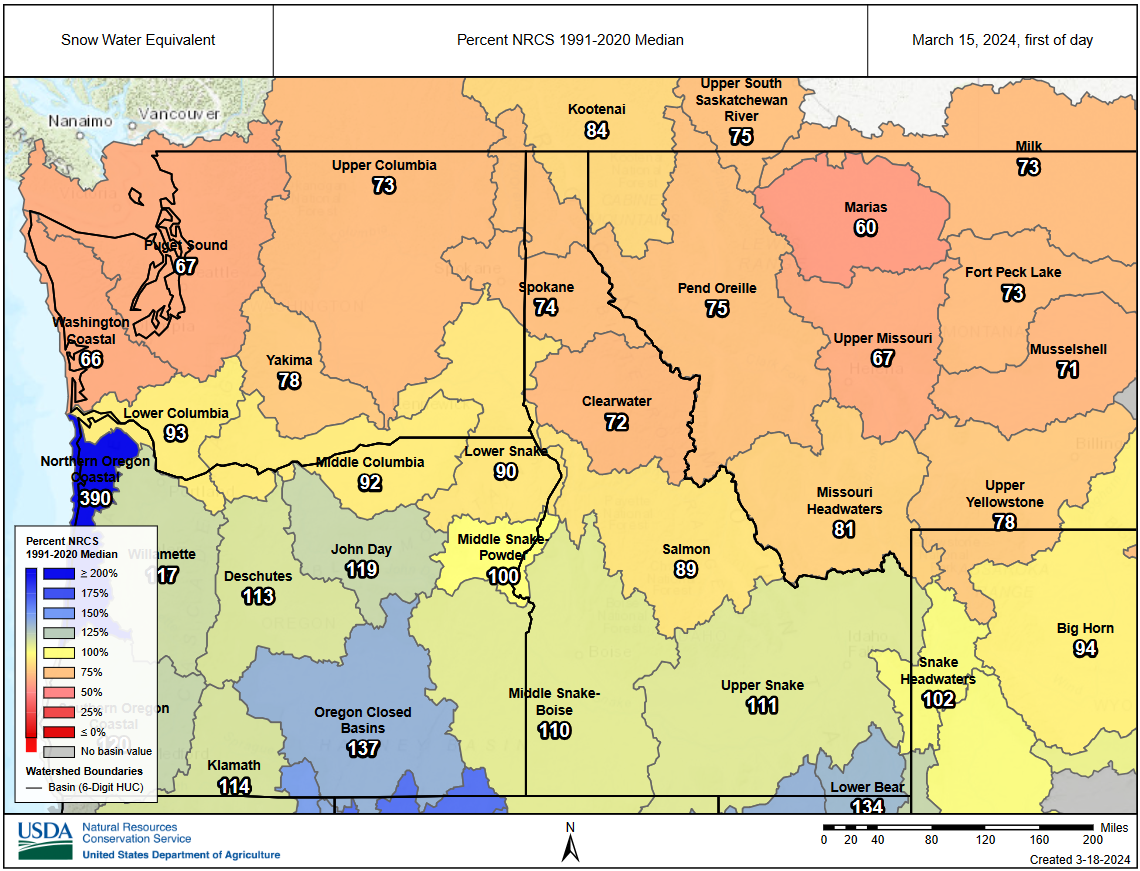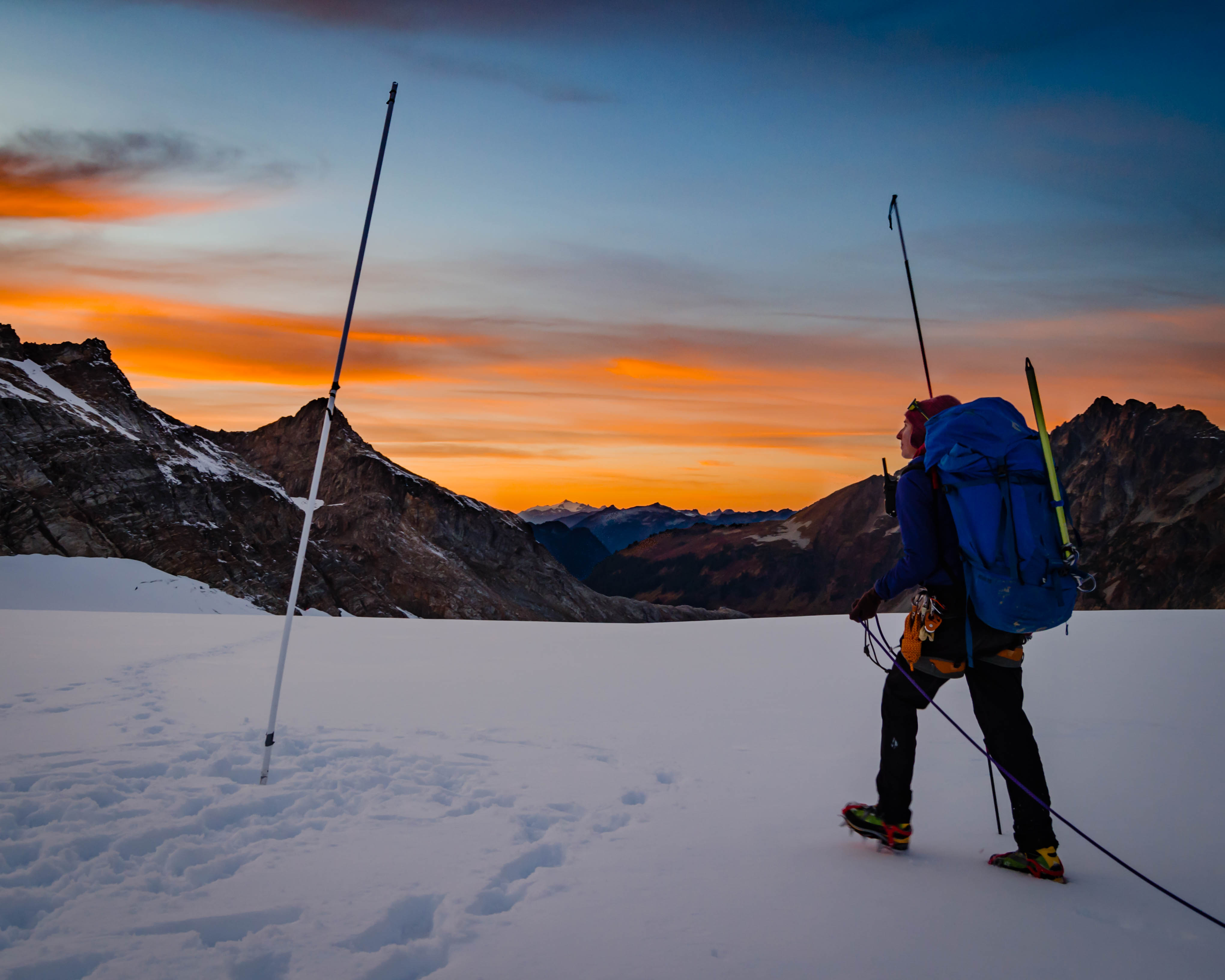
Spring snowpack levels in North Idaho lowest in 40 years
Listen
(Runtime :58)
Read
The snowpack in Idaho is lower than it has been in decades. Officials in Idaho are worried another hot summer is on the horizon, said Erin Whorton, a hydrologist for the Natural Resources Conservation Service.
“Snowpack typically peaks in early to mid-April in northern Idaho. So, we have about a month left to accumulate snow,” Whorton said. “With the weather forecast being just dry and hot, it’s very unlikely that we’re going to improve our snowpack unless we get big storms at the end of March.”

Idaho snowpack levels as of March 17, 2024. (Credit: Natural Resources Conservation Service)
This winter was an El Niño year for North America. That means snowfall is usually lower across the continent.
The storms that rolled into the West this year favored Nevada, Utah and California and only brushed the border of Idaho. Now, the snowpack in North Idaho is near record lows, Whorton said.
Northern Washington, Eastern Washington and North Idaho have lower snowpacks than most of the regions further south, Whorton said.
“We would like to see the snowpack improve so that we get more water in our streams for recreation, fisheries and all the things that are important to life in the Northwest,” Whorton said. “Right now, it doesn’t look like that’s going to happen.“
Northern Montana’s snowpack is also lower than normal this year, Whorton said.
“That’s really important for northern Idaho, because the big rivers begin in Western Montana,” Whorton said. “That area is also really below normal, which is going to impact streamflow in Idaho this year.”

Snowpack levels across the Northwest are lower this year. The climate predictions show hot and dry weather for spring and summer, said hydrologist Erin Whorton. (Credit: Natural Resources Conservation Service)
Fire preparedness begins in Idaho
“While we are concerned about the level of snowpack to this point, we also acknowledge that spring weather patterns and rainfall play a key role in the severity of the fire danger rating and expected fire behavior,” said Kane Steinbruecker, chief fire warden of the Clearwater-Potlatch Timber Protective Association.
More rain could help but more people moving to rural areas means the wildland urban interface is growing, Steinbruecker said. His team is making several improvements to prepare for fire season.
This fire season, CPTPA plans to contract with what Steinbruecker said is a more capable Type 3 helicopter. The models are usually smaller with a higher cruise speed, can carry up to five firefighters, and use a 180-gallon bucket for fighting fire.
CPTPA also is partnering with the Red Cross to offer wildland fire preparedness assessments to homes in Clearwater County in early May, Steinbruecker said.
U.S. Forest Service personnel also are taking steps to be prepared.
“We are increasing our preparedness by conducting more hazardous fuel removal treatments, such as prescribed burning and mechanical thinning,” said Margaret Miller, a fire information specialist for the Nez Perce-Clearwater National Forests.
The wildfire crisis strategy, a plan to mitigate fire risk near communities in wildfire hotspots over the next 10 years, means hundreds of millions of dollars are being used for wildfire prevention in the Northwest and around the country. The plan also funds protection of wildlife habitat and critical watersheds, Miller said.
Officials at the U.S. Forest Service should have a better idea of what the fire season might look like by July, Miller said.
















